This hummingbird magnet will transform any garden in a single season – how to grow the vibrant trumpet vine
Growing trumpet vine is an easy way to fill your outside space with colorful blooms
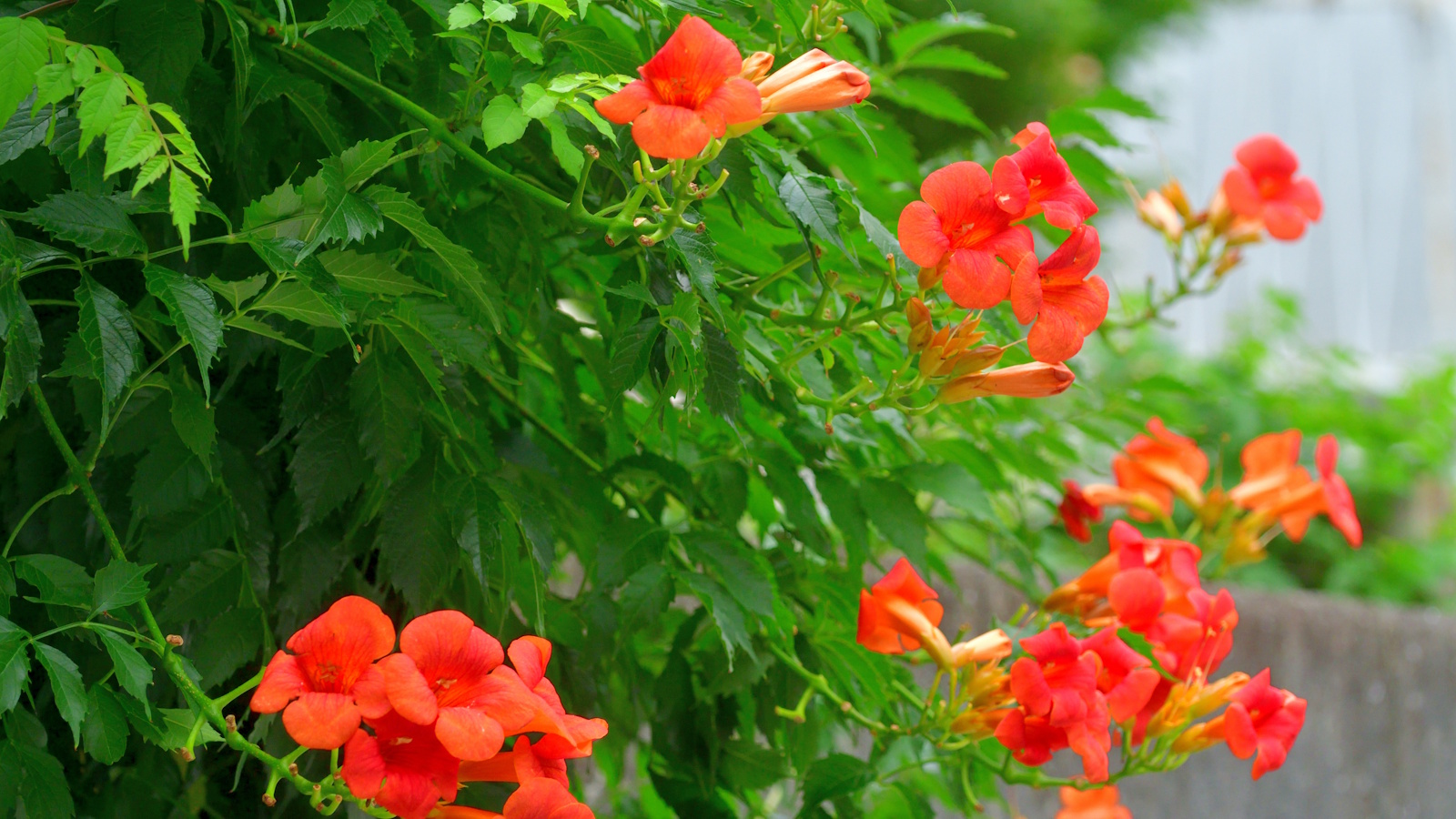

The trumpet vine, or Campsis radicans, is a fast-growing climber that is prized for its profusion of tubular pink, red or orange flowers in summer. These blooms are known to attract pollinators, proving to be a hit with hummingbirds who can often be seen feeding on the nectar-rich offerings in July and August and September.
Native to North America, this vigorous climber can be found growing across much of the eastern United States, covering garden walls, fences and pergolas with dense foliage and flowers. When grown correctly, the trumpet vine will provide privacy and vertical interest to any garden for many years.
So, whether you are looking to elevate bare walls in your yard, or perhaps you want to add some color to an empty garden archway, the trumpet vine is one of the easiest climbers to grow. Here, two garden experts reveal how to grow trumpet vine this year.
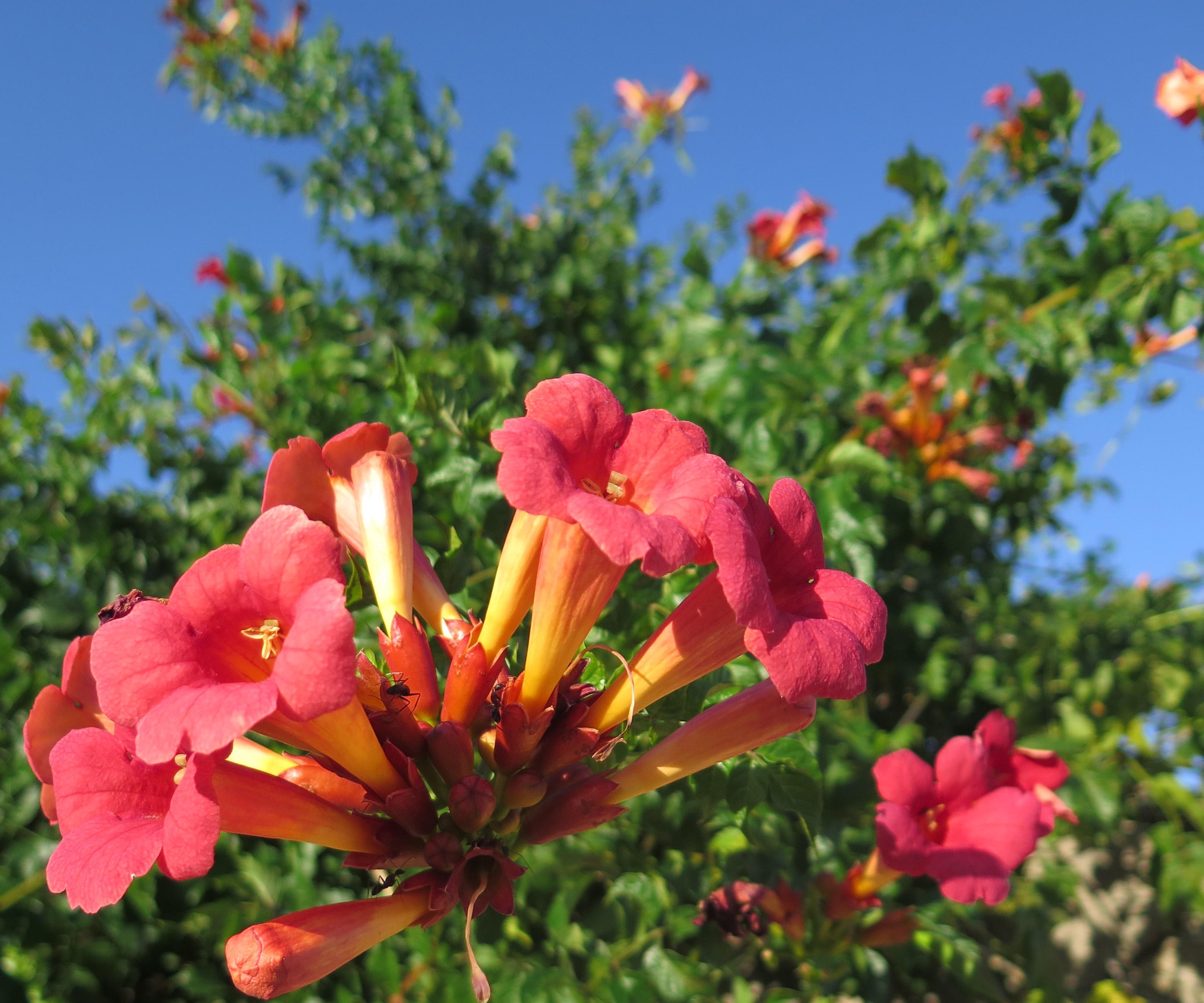
How to grow trumpet vine
The trumpet vine is a low-effort climbing plant that typically blooms for three months over summer. With little attention, this native climber will bring joy and color to your plot. Be warned, however, that the trumpet vine is a vigorous climber, and in the right conditions can grow up to 40 feet in just one season. So, keeping their size under control with regular pruning is necessary.
Growing habits of trumpet vine
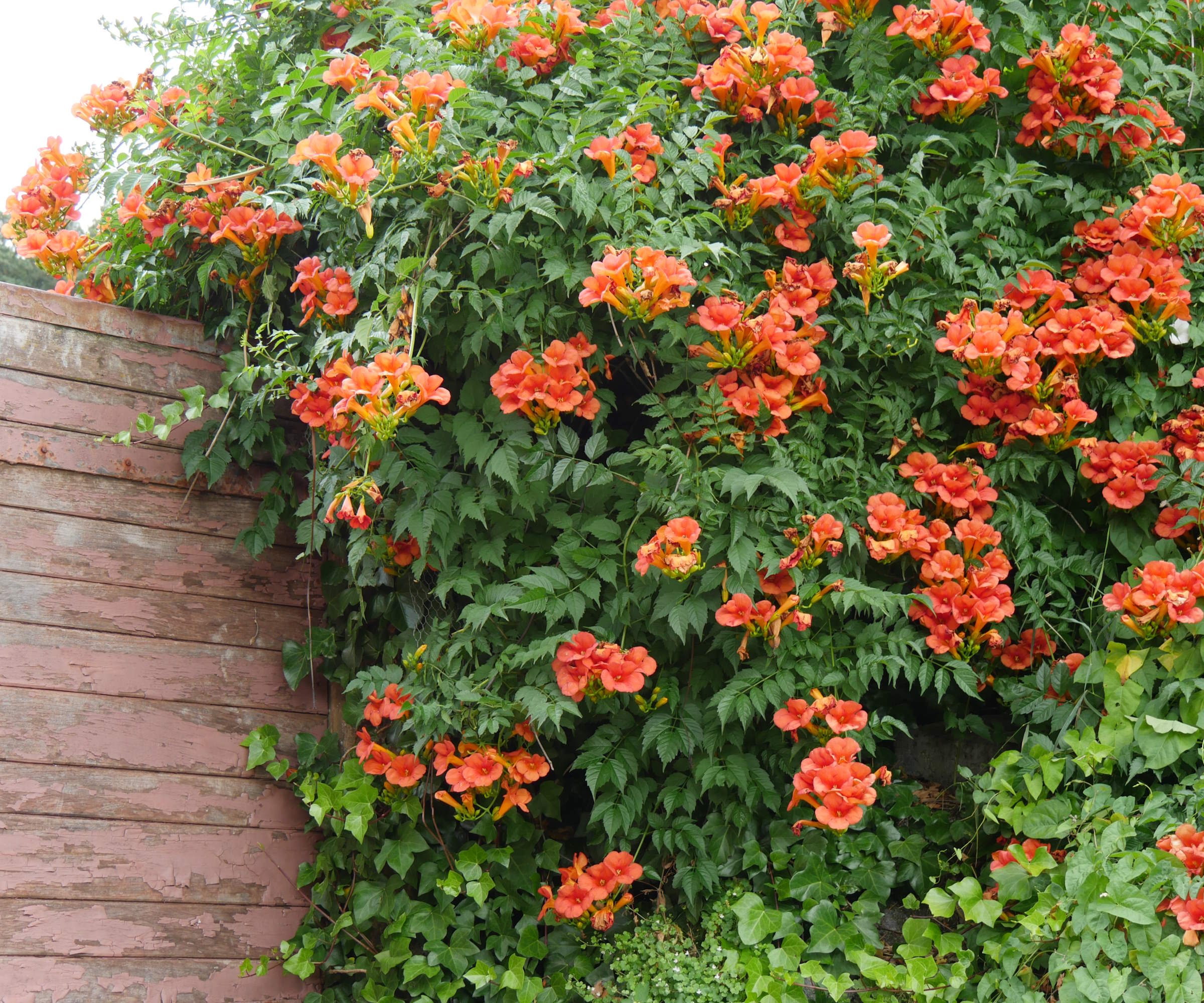
'If you are looking for plants to grow up a pergola or across a garden fence, you won't find much better than the trumpet vine, or Campsis radicans,' says plant expert from Wisconsin, Katie Sunderlage. 'This popular, fast-growing climber is often used to cover large empty walls or grow up a house, producing masses of blooms in the summer months.'
The trumpet vine is native to the eastern, north-central and south-central United States, found growing in the wild from New Jersey to Iowa, and south to Florida and Texas. In terms of how to grow trumpet vine, it does best from US hardiness zones 4 to 10 and can handle both wet and dry soils.
'While versatile, this plant is notably a very vigorous vine,' Katie adds, 'and often it can produce 40 feet of growth in a single year. For this reason, it is considered an invasive climber in several states, so always do your homework before planting.' Your local government office will be able to offer advice on what plants you should and should not grow.
'The blooms are trumpet-shaped, hence the naming of this climber,' Katie says. 'They can reach up to three inches in length and will last from early summer until early fall. And, it is not just hummingbirds that adore these nectar-rich flowers, but so too do native bees and butterflies.'
Live trumpet vine plants are available from Walmart.

Operations Manager at Holland Group, managing the customer service department and purchasing. Katie has been in the green industry since 2005 in the Greater Milwaukee area, earning her degree in Horticulture in 2008. She has been able to share her love for plants working in multiple garden centers, in sales positions and most recently in an online retail platform at Holland Group.
![Greenwood Nursery: Live Perennial Plants - Madame Galen Trumpet Creeper Vine + Campsis × Tagliabuana - [qty: 2x Pint Pots] - (click for Other Available Plants/quantities)](https://cdn.mos.cms.futurecdn.net/juwDu7eiyrtWRSNZScuvgC.jpg)
The fast growing trumpet vine thrives in full sun to partially shaded areas. Water regularly during the first season to help your plant establish.
Care guide for trumpet vine
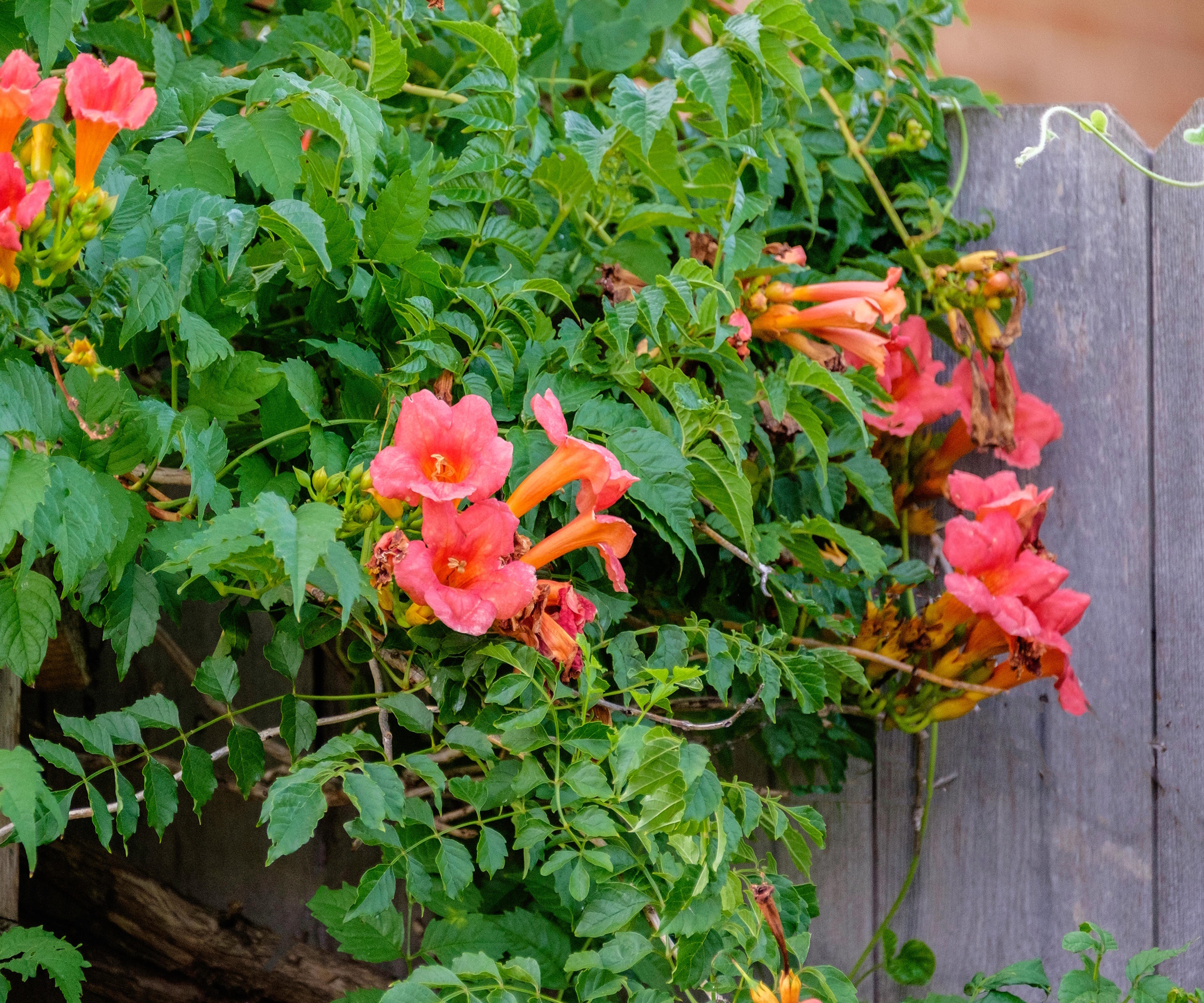
Soil: In its native environment, the trumpet vine can be found growing along the edges of marshland, swamps or at the edge of damp woodlands, thriving in moist soil. 'While trumpet vines grow best in moderately moist ground, they will tolerate dry or even poor soil conditions,' Katie says.
Light: 'Trumpet vines thrive in full sun to part shade,' Katie adds. 'For the best flowering show, position them in a border with six or more hours of sunshine. However, this adaptable climber tends to grow almost anywhere, and will tolerate different light levels, temperatures and soils, making it a great choice for many different yards.'
Watering: Water your trumpet vine once a week during its first year. Once established, supplemental watering is generally only needed for pot-grown specimens, and most vines planted in borders will get what they need from the soil. If the plant shows signs of wilting, you should get the watering can out of the garden shed.
Fertilizing: Fertilizer is generally not needed for this climber. Trumpet vines are vigorous by nature, and so no supplemental fertilizer is necessary.
Pruning: 'To keep this vine more compact and encourage a more even growth rate, it is recommended to prune in late winter or early spring,' Katie advises. 'Do not be afraid to complete a heavy prune, cutting right back to three or four buds per stem. This will help to manage the size of your climber. Trumpet vines also bloom on new stems, so cutting back in early spring will not impact the number of flowers.'
Toxicity: Trumpet vines are considered toxic to humans and pets. Contact with the leaves and flowers can result in skin redness and swelling, so wear gloves when handling. It is also toxic if ingested, so keep an eye on children and pets. Try these long gardening gloves from Amazon, to keep your arms protected.
Support: It is a good idea to support your trumpet vine with either a trellis, wires or framework. This will help to direct the plant to grow where you want it to grow. It is a good idea to use twine or ties to loosely support and guide the vine.
Containers: Growing in pots is a good option as this will help to restrict the size and spread of your trumpet vine. Position in a sunny corner of your yard, and be sure to incorporate plenty of drainage material in your container. Water your trumpet vine at least once a week during the summer, or when the soil dries out, which can be frequent during the hot months of July and August.
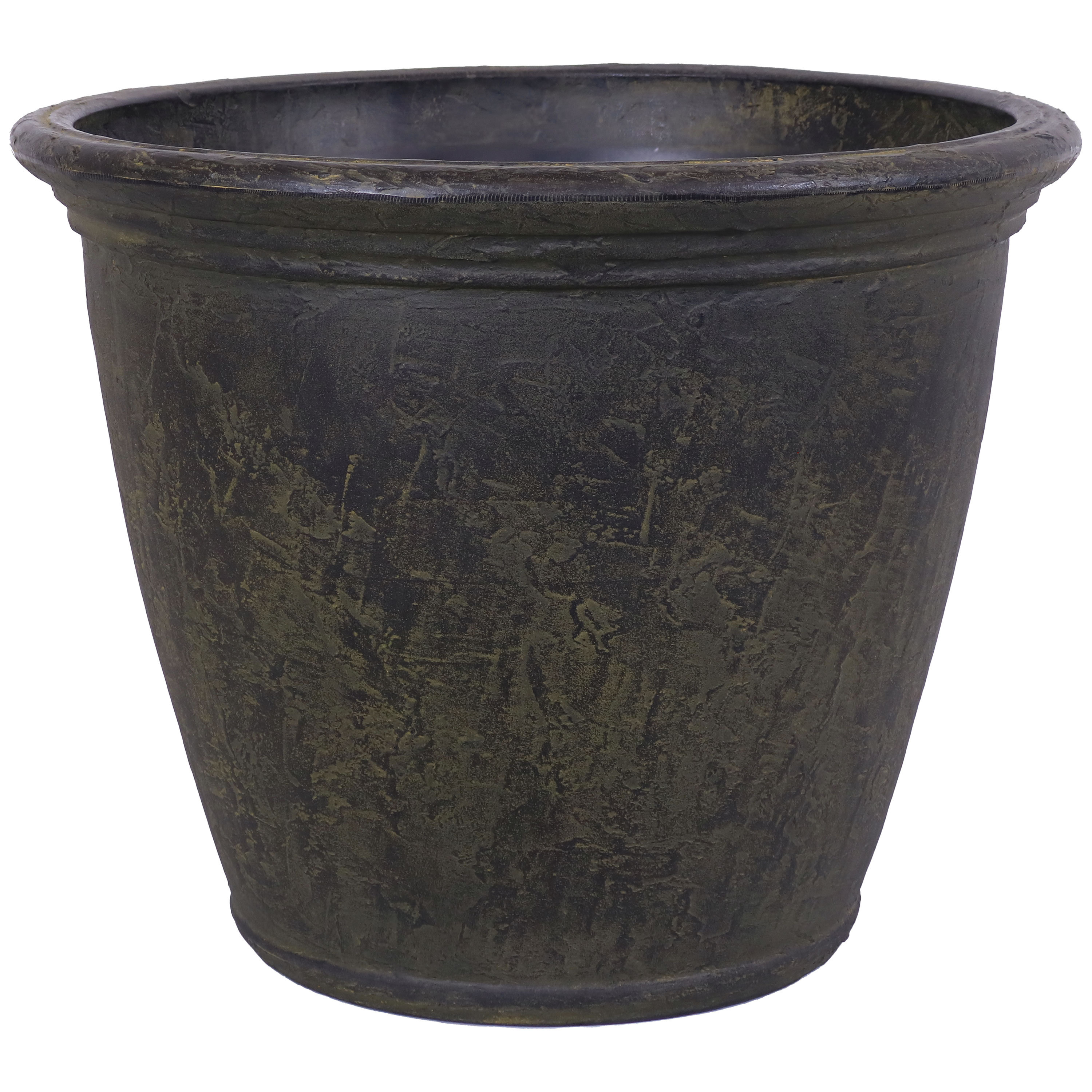
This rustic planter is perfect for contemporary spaces, adding a subtle but decorative touch to garden designs. Made of low-density polyresin, this planter is hard-wearing and weather-resistant.
FAQs
How do I get rid of a trumpet vine?
If you have inherited an overgrown or out-of-control trumpet vine, you might decide to remove it from your yard. Using a pruning saw, such as this highly rated Corona model, available from Amazon, cut right down to the base, disposing of all material in your green waste. Using a heavy-duty spade, dig out the roots and the woody base. Small shoots may appear over the coming months, but these can be dug out using a trowel. Eventually, your perseverance will pay off.
'While some people consider the trumpet vine too vigorous to grow, regular maintenance will keep it under control,' says Reese Robbins, garden expert and creator of Just Pure Gardening. 'The long-lasting blooms are a natural feeding option for many birds, and notably, will prove popular during the hummingbird migration as our native birds make their way south.'

Reese L. Robbins is the founder of Just Pure Gardening, a site full of fruit and vegetable growing guides, garden ideas, and garden product reviews.
Sign up to the Homes & Gardens newsletter
Design expertise in your inbox – from inspiring decorating ideas and beautiful celebrity homes to practical gardening advice and shopping round-ups.

Thomas is a Content Editor within the Gardens Team at Homes and Gardens. He has worked as a professional gardener for both public spaces and private estates, specializing in productive gardening, growing food and flowers. Trained in Horticulture at the Garden Museum, he has written on gardening and garden history for various publications, including The English Garden, Gardens Illustrated, Hortus, The London Gardener and Bloom. He has co-authored a Lonely Planet travel book, The Tree Atlas, due out in 2024.
You must confirm your public display name before commenting
Please logout and then login again, you will then be prompted to enter your display name.
-
 What furniture styles increase the value of your home? Real estate agents and designers reveal if what you buy for your home can impact the value
What furniture styles increase the value of your home? Real estate agents and designers reveal if what you buy for your home can impact the valueHow important is the furniture in our homes, and does it impact the sale of a property? Real estate experts and interior designers have the answer
-
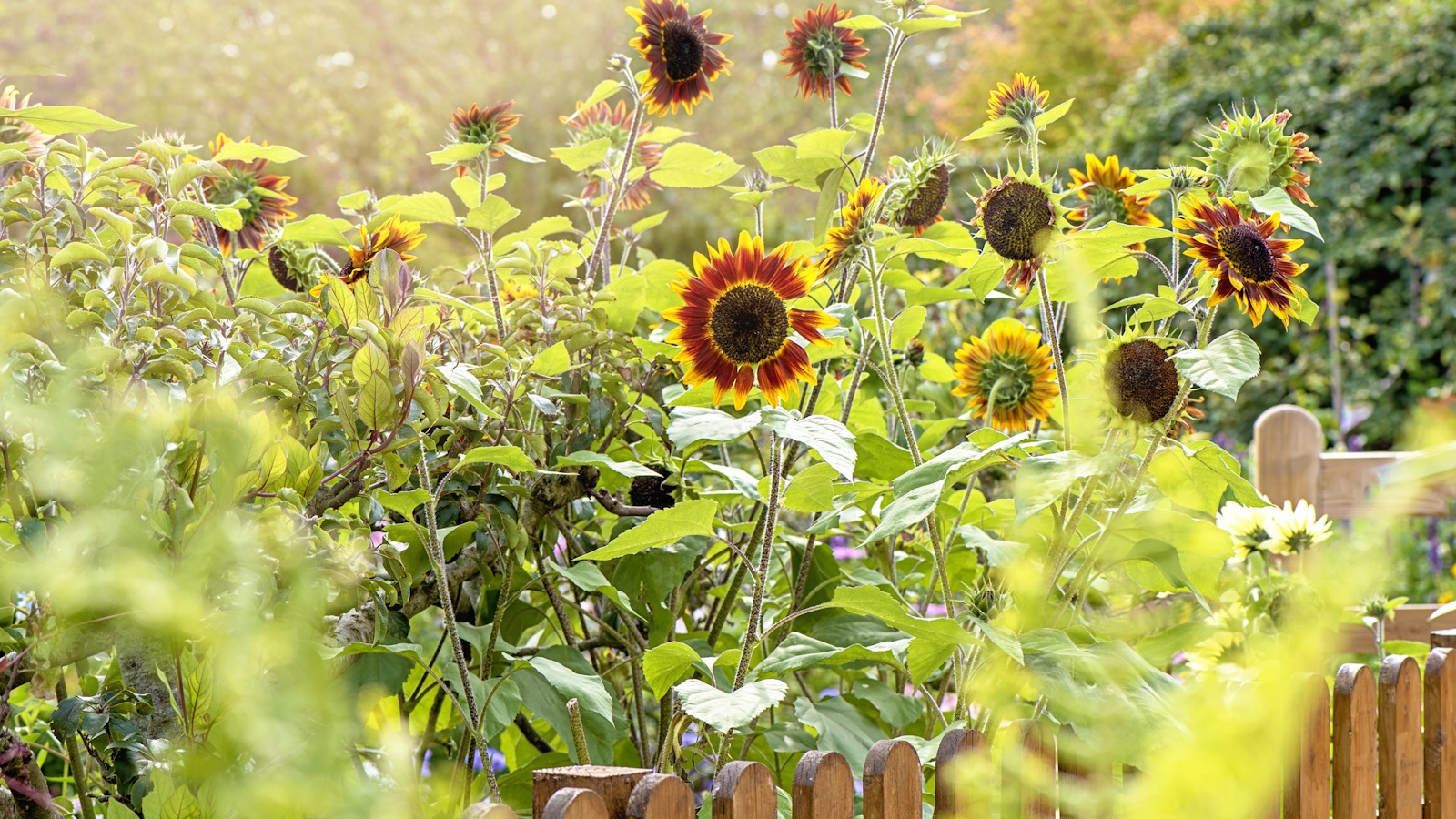 Best dwarf sunflowers for pots and small spaces – transform even tiny yards this summer with these bold, colorful blooms
Best dwarf sunflowers for pots and small spaces – transform even tiny yards this summer with these bold, colorful bloomsThese container-friendly dwarf sunflowers are sure to put on a summer show in your garden, whatever the size
-
 Best dwarf sunflowers for pots and small spaces – transform even tiny yards this summer with these bold, colorful blooms
Best dwarf sunflowers for pots and small spaces – transform even tiny yards this summer with these bold, colorful bloomsThese container-friendly dwarf sunflowers are sure to put on a summer show in your garden, whatever the size
-
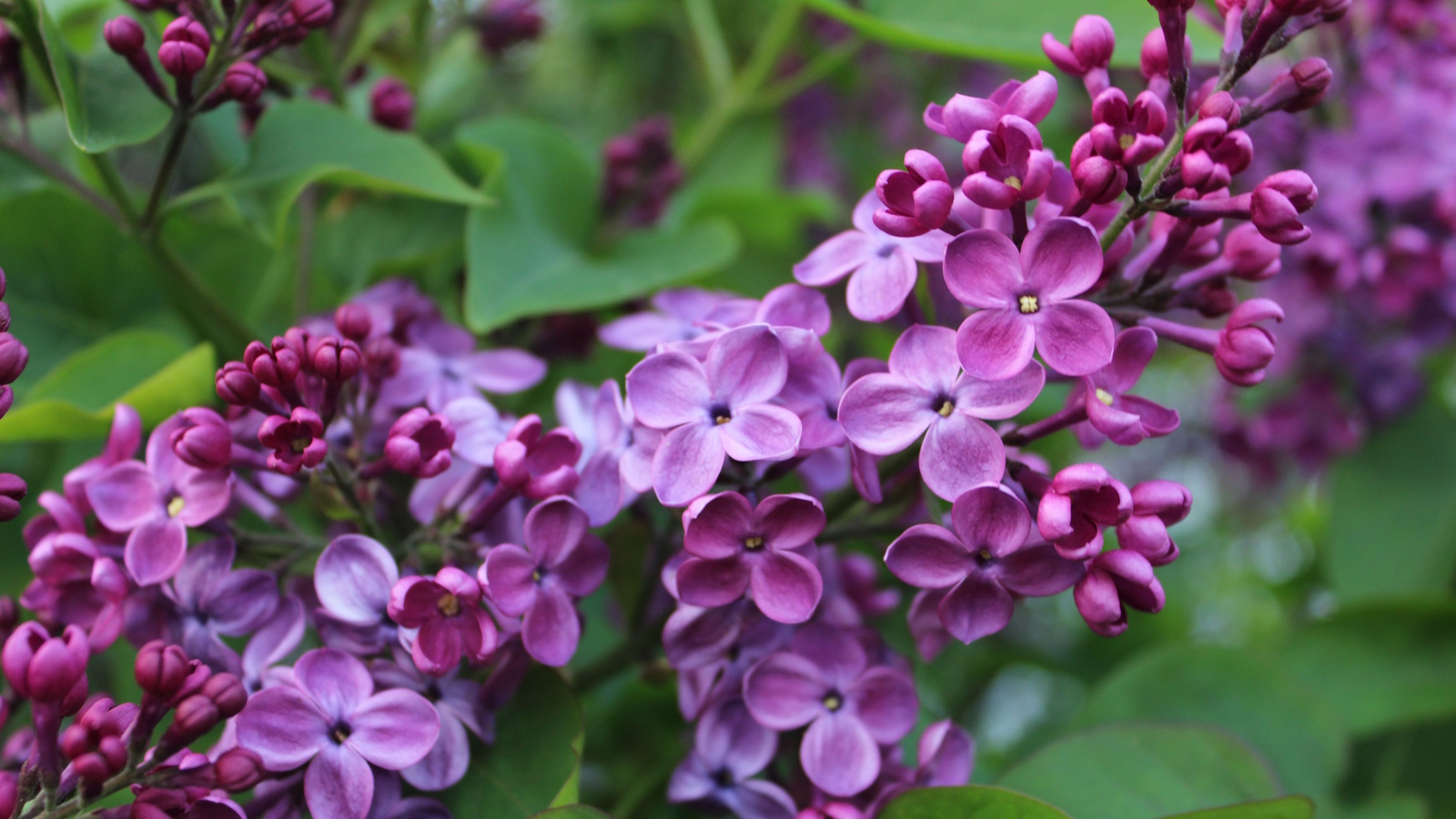 Is it necessary to deadhead lilac flowers? Here's what I've learned after a decade working as a professional gardener
Is it necessary to deadhead lilac flowers? Here's what I've learned after a decade working as a professional gardenerDeadheading spent lilac blooms can help to improve the appearance of your plants, but it won't encourage any more blooms
-
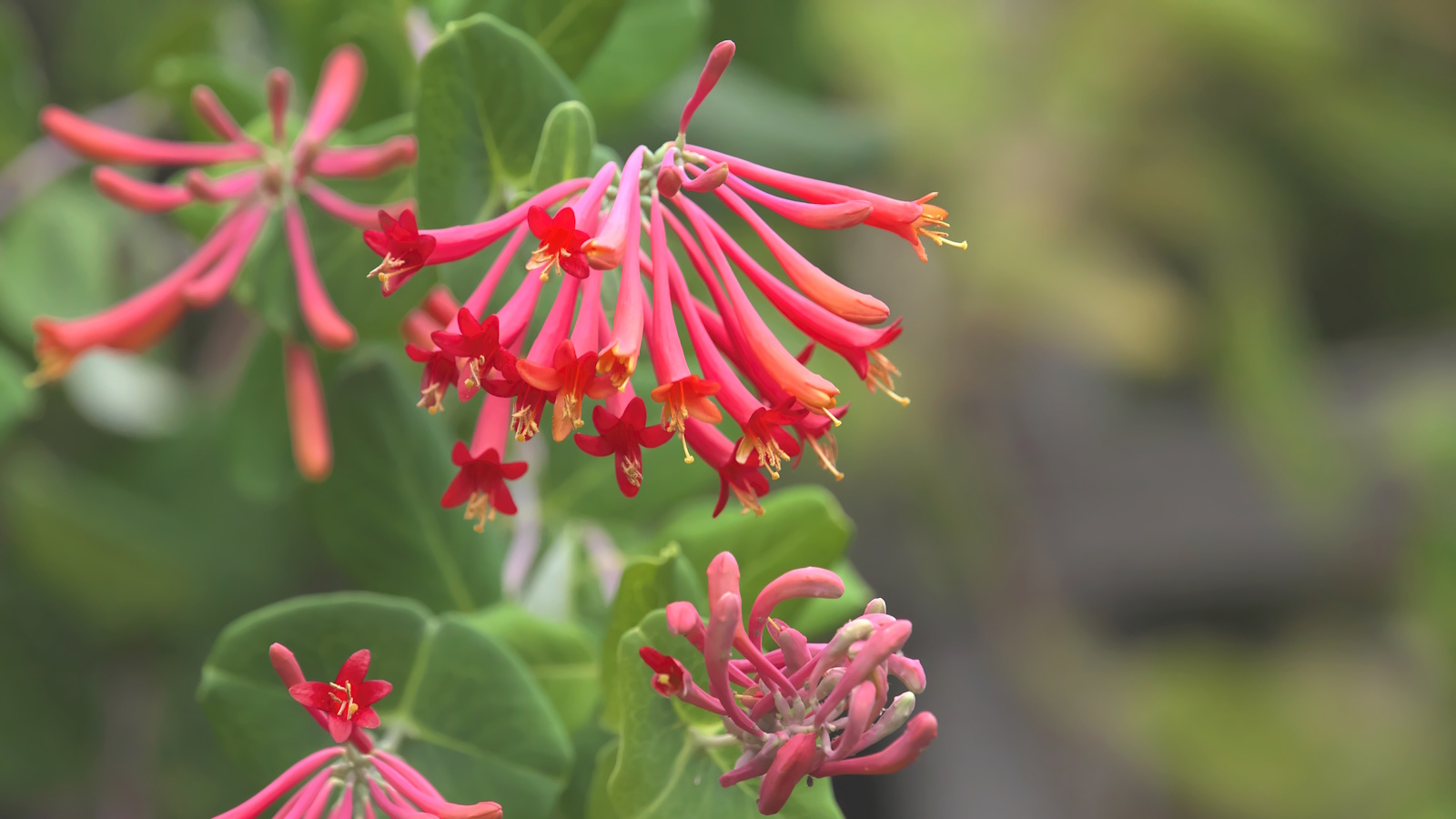 Best climbers to attract hummingbirds – 5 nectar-rich vines with vibrant, colorful flowers to fill pots and borders
Best climbers to attract hummingbirds – 5 nectar-rich vines with vibrant, colorful flowers to fill pots and bordersHummingbirds, butterflies and bees will not be able to stay away from these easy-to-grow flowering climbers
-
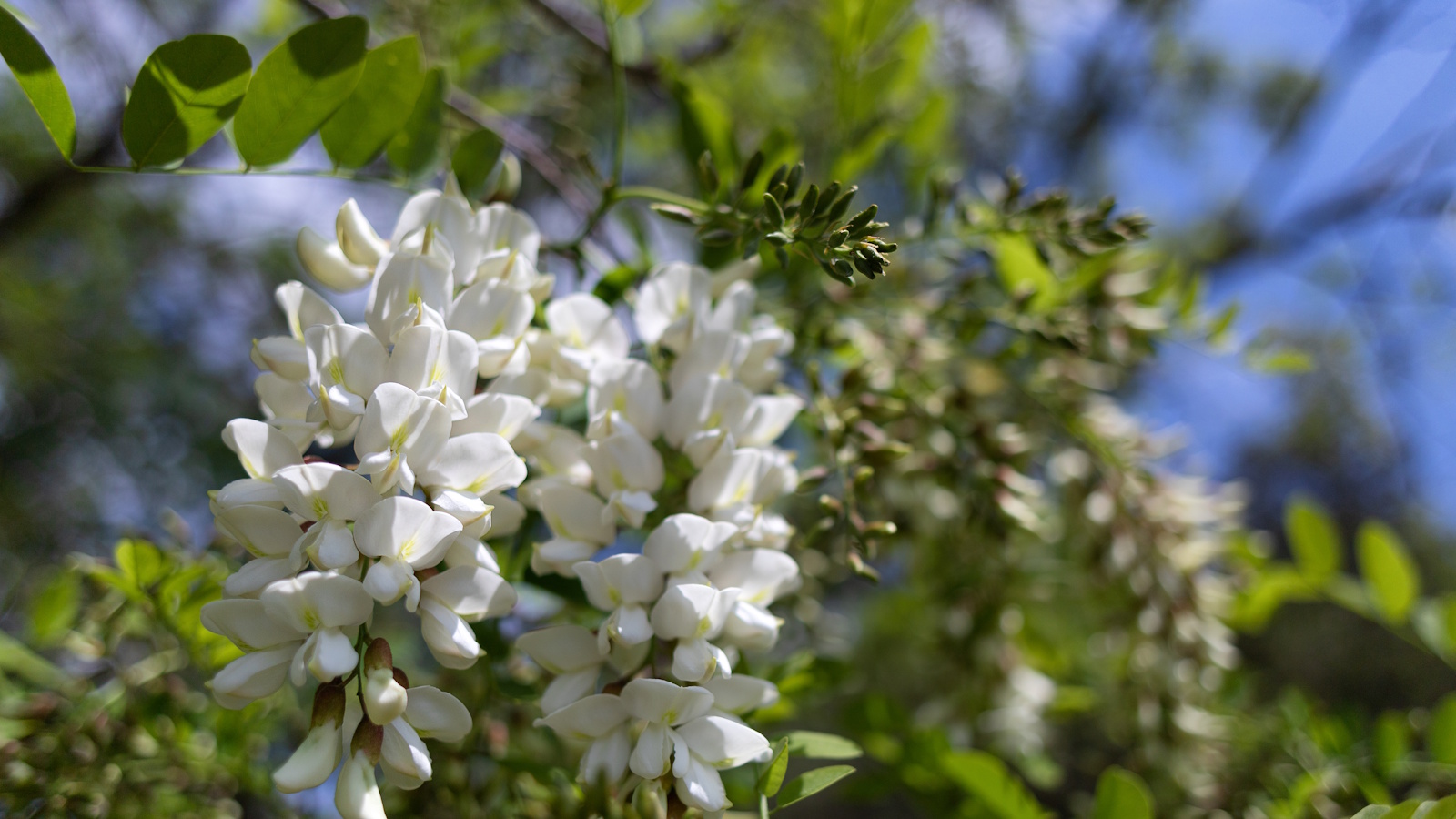 5 plants with thorns and spines to avoid in family gardens – plus the safer alternatives to grow instead
5 plants with thorns and spines to avoid in family gardens – plus the safer alternatives to grow insteadWhile these plants are good for intruder-proofing your yard, they might not be ideal in homes with young children or pets
-
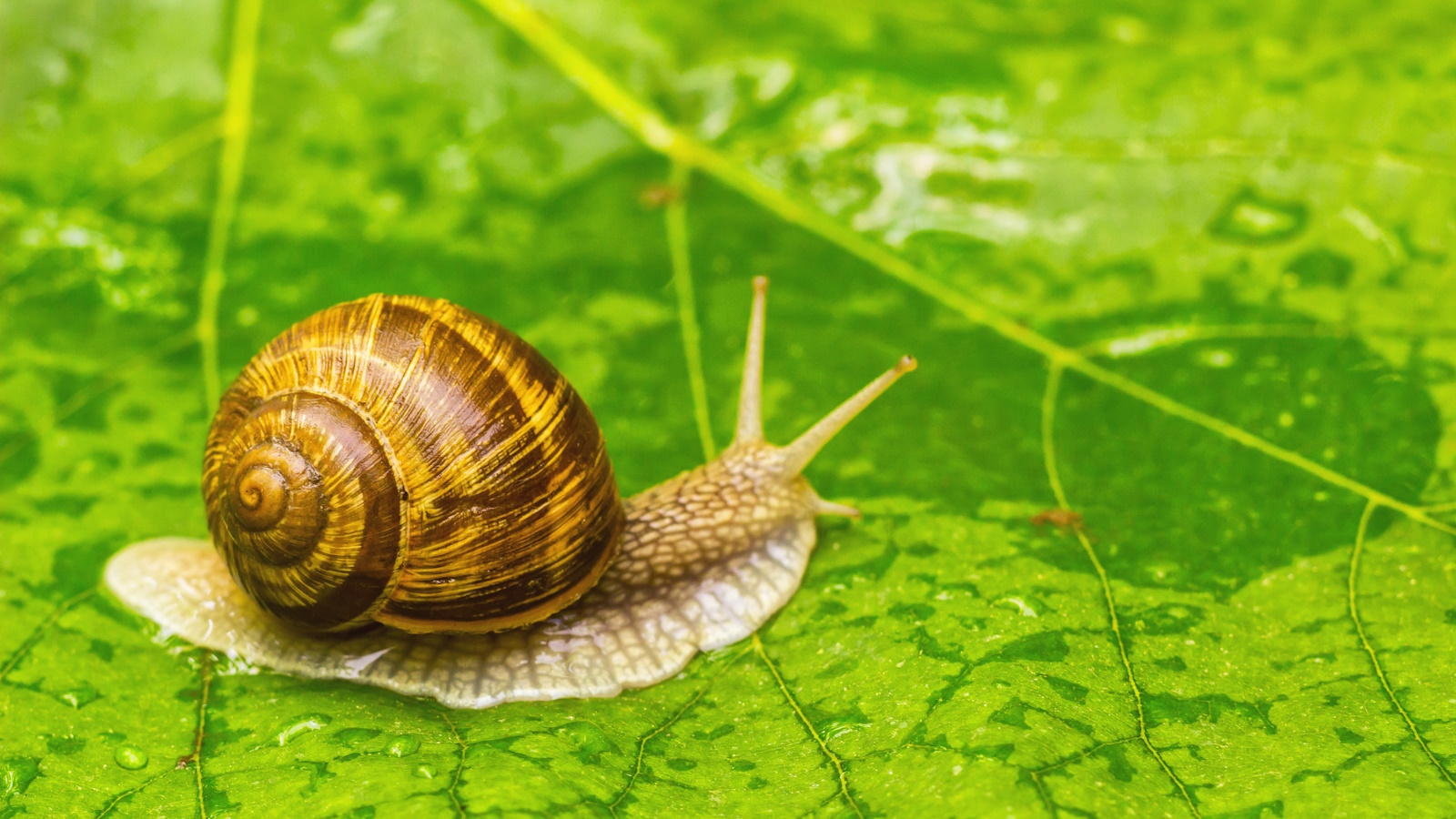 This common vegetable is the best natural defence against slugs and snails – and you probably already have one in your fridge
This common vegetable is the best natural defence against slugs and snails – and you probably already have one in your fridgeHere's how to pest-proof your flower beds and veg garden this year
-
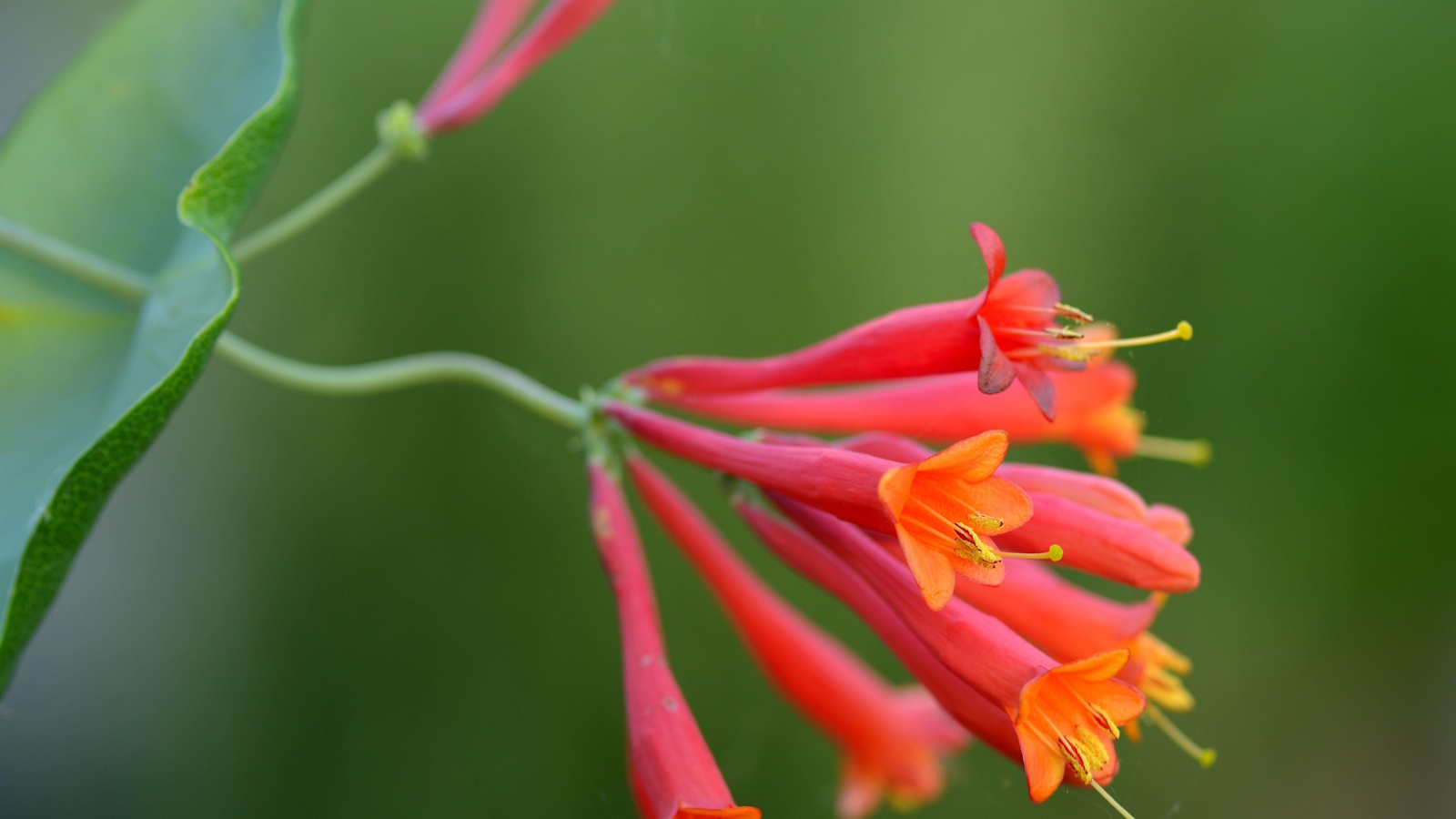 Native alternatives to invasive wisteria – 5 North American climbing plants with spectacular foliage and flowers to grow instead
Native alternatives to invasive wisteria – 5 North American climbing plants with spectacular foliage and flowers to grow insteadThese native vines will fill garden walls, fences and pergolas with greenery
-
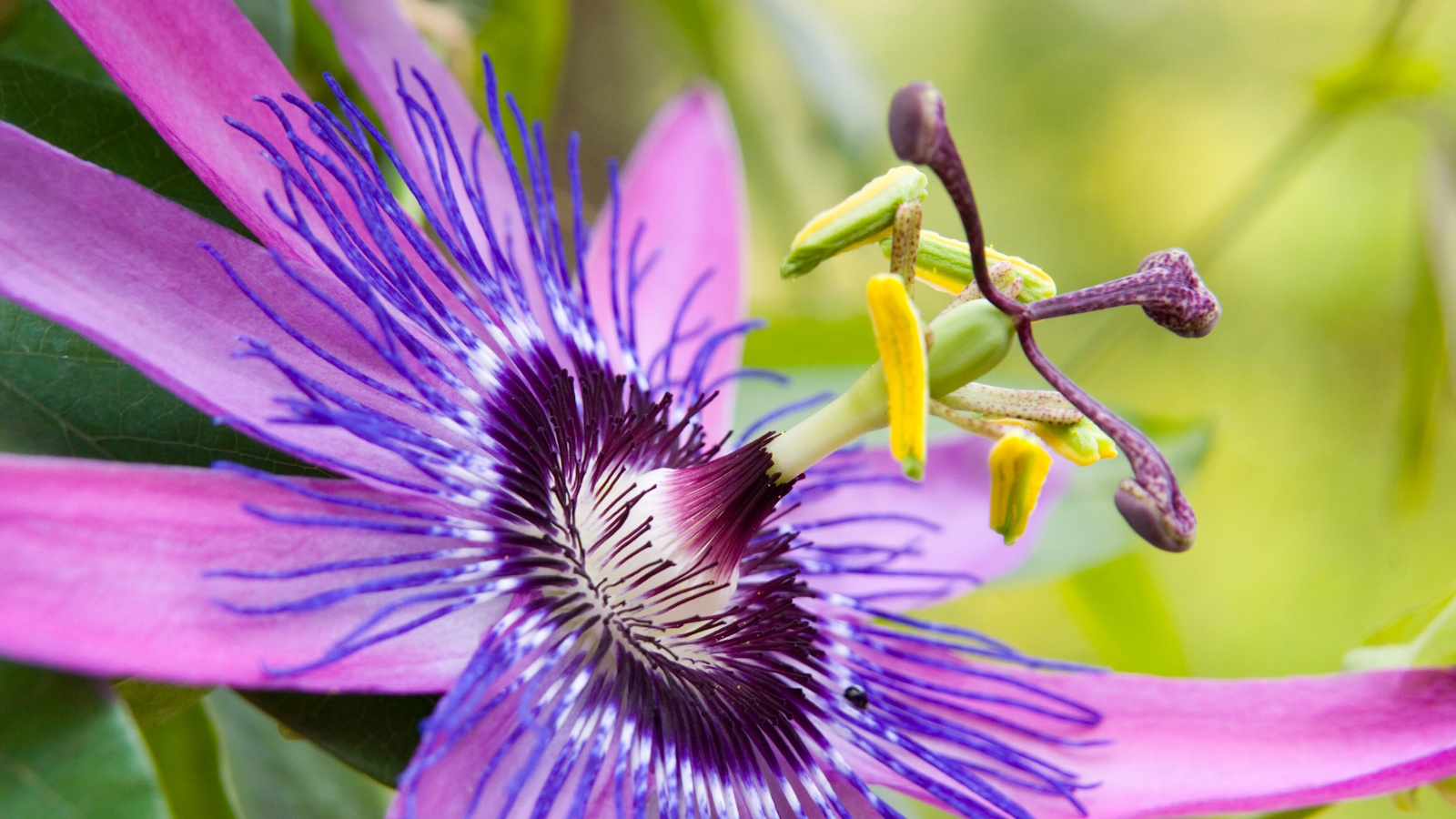 How to grow passion flowers in pots – the ultimate flowering vine that will transform any garden, whatever the size
How to grow passion flowers in pots – the ultimate flowering vine that will transform any garden, whatever the sizeLearning how to grow passion flowers in pots is a great option for gardeners with compact yards
-
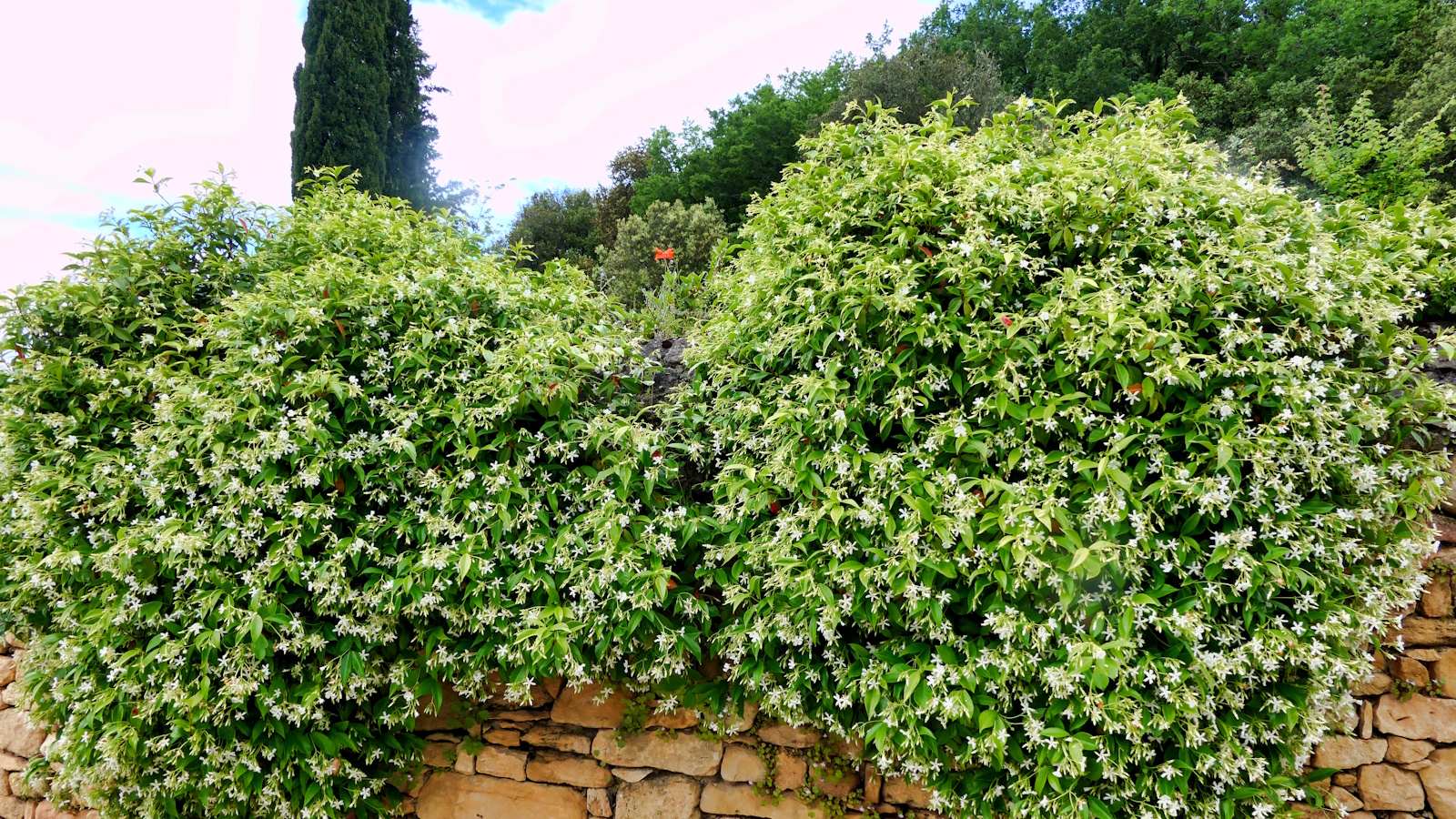 How to fertilize star jasmine – experts reveal the secrets for healthy climbing plants with masses of scented blooms
How to fertilize star jasmine – experts reveal the secrets for healthy climbing plants with masses of scented bloomsFeeding your vines at the right time can give them a boost during the growing season